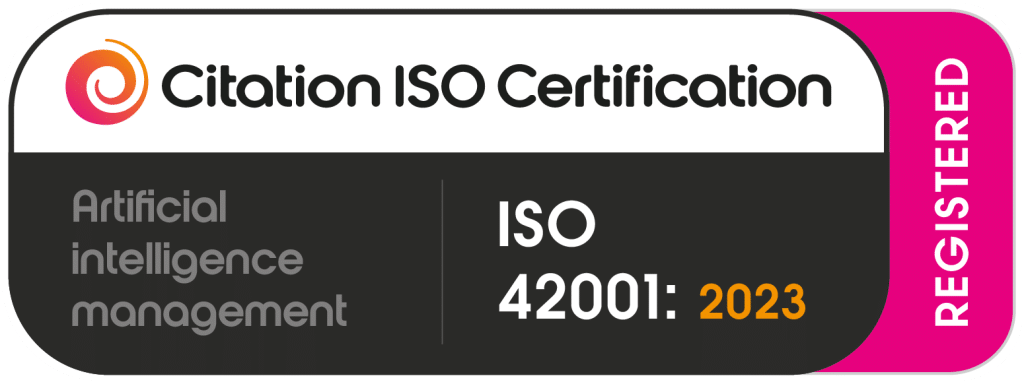Inventory management is a critical aspect of any business, as it directly impacts profitability and customer satisfaction. One effective strategy to optimize inventory management is through demand forecasting. By accurately predicting customer demand, businesses can ensure they have the right products in the right quantities at the right time. In this article, we will discuss the five essential steps to improve inventory management through demand forecasting.
Understanding the Importance of Demand Forecasting in Inventory Management
Demand forecasting is the process of estimating future customer demand for a product or service. It plays a crucial role in inventory management as it helps businesses plan their production, procurement, and distribution activities accordingly. When demand is accurately forecasted, businesses can avoid costly inventory shortages or excesses, leading to improved operational efficiency and cost savings.
The Role of Demand Forecasting in Inventory Control
Effective demand forecasting is vital for efficient inventory control. By understanding customer demand patterns, businesses can determine the optimal inventory levels and replenishment schedules. This minimizes stockouts and reduces the need for excessive stock, preventing tying up valuable resources unnecessarily.
Benefits of Accurate Demand Forecasting
Accurate demand forecasting provides numerous benefits for businesses:
- Improved Customer Satisfaction: When businesses can meet customer demand promptly and accurately, it enhances customer satisfaction levels.
- Reduced Costs: Demand forecasting prevents the overstocking of products, reducing storage and holding costs.
- Optimized Inventory Levels: By understanding demand patterns, businesses can maintain optimal inventory levels and avoid unnecessary tying up of capital.
- Streamlined Supply Chain: Demand forecasting enables suppliers and manufacturers to plan production and distribution, ensuring a smooth and efficient supply chain.
- Enhanced Profitability: By minimizing stockouts and excesses, businesses can maximize profitability.
Improved customer satisfaction is a key benefit of accurate demand forecasting. When businesses can meet customer demand promptly and accurately, it enhances customer satisfaction levels. Customers appreciate receiving their desired products or services in a timely manner, and this can lead to increased loyalty and repeat business.
Another significant benefit of demand forecasting is the reduction of costs. By accurately predicting demand, businesses can avoid overstocking products, which can result in excess storage and holding costs. On the other hand, underestimating demand can lead to stockouts, which can result in lost sales and dissatisfied customers. By having a clear understanding of customer demand, businesses can optimize their inventory levels and minimize unnecessary costs.
Optimized inventory levels are crucial for efficient inventory management. By analyzing demand patterns, businesses can determine the right amount of inventory to keep on hand. This prevents tying up valuable capital in excessive stock and ensures that the necessary products are available when customers need them. Maintaining optimal inventory levels allows businesses to allocate their resources effectively and focus on other critical aspects of their operations.
Streamlined supply chain operations are also a direct result of accurate demand forecasting. When businesses have a clear understanding of customer demand, they can communicate this information to their suppliers and manufacturers. This enables them to plan production and distribution activities accordingly, ensuring a smooth and efficient supply chain. By aligning supply with demand, businesses can minimize delays, reduce lead times, and improve overall operational efficiency.
Finally, accurate demand forecasting contributes to enhanced profitability. By minimizing stockouts and excesses, businesses can maximize their sales potential and avoid unnecessary costs. When businesses can consistently meet customer demand, they can capture more sales opportunities and generate higher revenues. Additionally, by optimizing inventory levels, businesses can reduce holding costs and improve their profit margins.
In conclusion, demand forecasting is a critical aspect of inventory management. By accurately predicting customer demand, businesses can optimize their inventory levels, reduce costs, streamline their supply chain, and enhance profitability. Investing in reliable demand forecasting methods and tools is essential for businesses looking to improve their operational efficiency and gain a competitive edge in the market.
Step 1: Collecting and Organizing Relevant Data
The first step in demand forecasting is collecting and organizing relevant data. This includes historical sales data, customer preferences, market trends, and any other data that may influence customer demand. A comprehensive and accurate dataset is crucial for building an effective demand forecasting model.
When it comes to historical sales data, businesses need to collect information on past sales volumes, including both the quantity and value of products sold. This data provides insights into the demand patterns over time, allowing businesses to identify any seasonal or cyclical trends that may impact future sales.
Customer preferences also play a significant role in demand forecasting. By understanding what customers want and how their preferences change over time, businesses can adjust their production and marketing strategies accordingly. This can be done through surveys, focus groups, or analyzing customer feedback and reviews.
Market trends are another critical factor to consider. Businesses need to stay updated on industry developments, competitor activities, and changes in consumer behavior. By monitoring market trends, businesses can anticipate shifts in demand and adjust their forecasting models accordingly.
Identifying Key Data Points for Demand Forecasting
When collecting data for demand forecasting, it is essential to identify the key data points that have a significant impact on customer demand. These can include historical sales volume, seasonal patterns, market trends, promotional activities, and customer demographics. By analyzing these data points, businesses can gain valuable insights into customer behavior.
Historical sales volume provides a baseline for understanding customer demand. By analyzing past sales data, businesses can identify patterns and trends that can help predict future demand. For example, if sales tend to increase during the holiday season, businesses can anticipate higher demand during that time and adjust their production and inventory accordingly.
Seasonal patterns are also crucial to consider. Many industries experience fluctuations in demand based on the time of year. For example, the retail industry often sees increased sales during the holiday season, while the tourism industry may experience higher demand during summer months. By analyzing seasonal patterns, businesses can adjust their forecasting models to account for these fluctuations.
Market trends, such as changes in consumer preferences or advancements in technology, can significantly impact customer demand. Businesses need to stay informed about these trends to accurately forecast demand. For example, if a new technology is introduced that makes a product obsolete, businesses need to anticipate a decline in demand for that product and adjust their forecasting models accordingly.
Promotional activities, such as discounts, sales, or marketing campaigns, can also influence customer demand. By analyzing the impact of these activities on past sales data, businesses can estimate the effect they will have on future demand. For example, if a previous promotion resulted in a significant increase in sales, businesses can anticipate a similar response in the future and adjust their forecasting models accordingly.
Customer demographics provide insights into the characteristics and preferences of different customer segments. By analyzing demographic data, businesses can tailor their products and marketing strategies to specific customer groups. For example, if a certain demographic group has shown a preference for eco-friendly products, businesses can develop and promote sustainable options to cater to that demand.
Tools and Techniques for Data Organization
To effectively organize and analyze data for demand forecasting, businesses can leverage advanced analytics tools like Graphite Note. This no-code predictive analytics tool simplifies the process of data organization and analysis, allowing businesses to focus on deriving valuable insights rather than spending time on complex data management.
Graphite Note provides businesses with a user-friendly interface that allows them to import and organize data from various sources, such as spreadsheets, databases, and cloud storage. The tool also offers data cleaning and transformation capabilities, ensuring that the data is accurate and ready for analysis.
Once the data is organized, businesses can use Graphite Note’s advanced analytics features to perform various forecasting techniques, such as time series analysis, regression analysis, and machine learning algorithms. These techniques help businesses uncover patterns and relationships within the data, enabling them to make more accurate demand forecasts.
Furthermore, Graphite Note provides visualizations and interactive dashboards that allow businesses to explore and communicate their findings effectively. These visualizations help stakeholders understand the demand forecasting insights and make informed decisions based on the data.
In conclusion, collecting and organizing relevant data is the crucial first step in demand forecasting. By identifying key data points, businesses can gain valuable insights into customer behavior and market trends. With the help of tools like Graphite Note, businesses can streamline the data organization process and leverage advanced analytics techniques to make accurate demand forecasts.
Step 2: Analyzing Historical Sales Trends
Analyzing historical sales trends is a fundamental step in demand forecasting. By understanding past sales patterns, businesses can identify recurring trends and seasonal fluctuations, enabling them to predict future demand more accurately.
The Importance of Sales History in Demand Forecasting
Sales history provides valuable insights into customer buying behavior. By analyzing historical sales data, businesses can identify any underlying patterns or trends, such as seasonal variations or sudden demand spikes. This information can then be used to project future demand more effectively.
How to Analyze Sales Trends for Forecasting
When analyzing sales trends for demand forecasting, businesses should consider factors such as seasonality, market trends, promotions, and any other factors that may influence customer demand. By applying statistical models or advanced machine learning algorithms, businesses can extract meaningful insights from sales data and make more accurate demand forecasts.
Step 3: Incorporating Market Research
Market research is an invaluable tool for demand forecasting. By understanding market trends, customer preferences, and competitor activities, businesses can gain a competitive edge in demand forecasting.
Understanding the Role of Market Research in Forecasting
Market research provides businesses with a comprehensive understanding of customer behavior, preferences, and market dynamics. By incorporating market research data into demand forecasting models, businesses can enhance the accuracy of their forecasts and make informed decisions regarding inventory management.
Effective Market Research Methods for Demand Prediction
When conducting market research for demand prediction, businesses can leverage various methods such as surveys, focus groups, competitor analysis, and social media monitoring. These methods provide valuable insights into customer preferences, emerging trends, and competitive offerings, enabling businesses to make more accurate demand forecasts.
Step 4: Implementing a Demand Forecasting Model
Implementing a demand forecasting model is the culmination of the previous steps. A demand forecasting model uses historical data, market research, and other relevant factors to predict future customer demand.
Choosing the Right Forecasting Model for Your Business
The choice of a demand forecasting model depends on various factors such as data availability, business size, industry, and forecasting requirements. There are several popular forecasting models available, including time series models, regression models, and machine learning algorithms. Selecting the right model for your business requires careful analysis of these factors.
Key Components of a Successful Forecasting Model
A successful forecasting model incorporates key components such as accurate historical data, relevant factors influencing demand, and validation against actual outcomes. It should be flexible enough to adapt to changing market dynamics and capable of continuous improvement based on new data insights.
In conclusion, demand forecasting is an essential tool for improving inventory management. By following the five steps outlined in this article and leveraging tools like Graphite Note, businesses can optimize their inventory levels, reduce costs, enhance customer satisfaction, and ultimately improve their bottom line. Embracing the power of demand forecasting can give businesses a competitive advantage in today’s dynamic marketplace.





